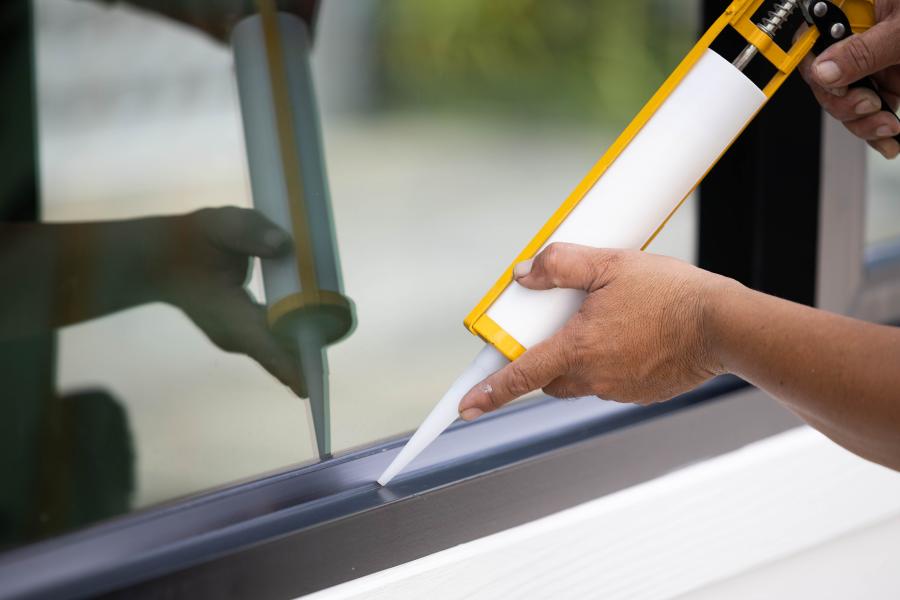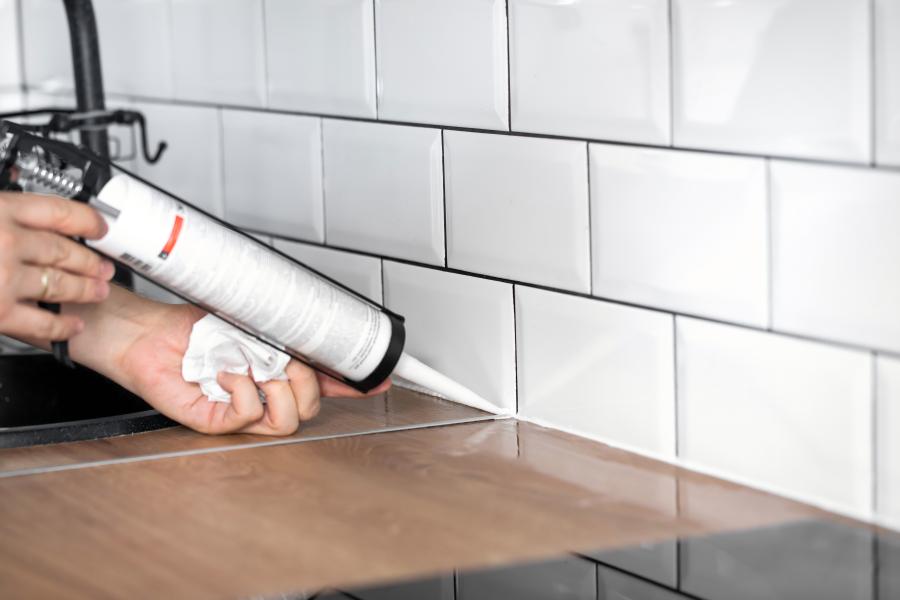Expert guidance from BoPin Construction Chemicals – choosing the right product for the right job
Choosing the Right Product for the Right Job
You need to stick two things together and make it waterproof. You reach for a tube of silicone. But is it a “silicone adhesive” or a “silicone sealant”?
This confusion is one of the most common reasons for project failure. The tubes look similar. Both might be waterproof. Both might come from the silicone aisle. But they are engineered for fundamentally different jobs.
Using the wrong one can mean:
- Projects that fail within days or weeks
- Safety hazards from inadequate bonding strength
- Wasted time and money redoing work
- Frustration from not understanding why it didn’t work
This guide will clear up all the confusion. We’ll break down the fundamental differences between silicone adhesives and sealants. You’ll learn exactly when to use each. And we’ll help you choose the right product for a permanent, professional result.
The result? Projects that work the first time and last for years.
The Core Difference: Strength vs. Flexibility
Understanding the fundamental design purpose of each product is the key to choosing correctly.
Silicone Adhesives (Glues): Engineered for BONDING
Primary Function: To BOND things together permanently.
Silicone adhesives are formulated for high tensile and shear strength. Their job is to hold things together under load and resist forces trying to pull them apart.
Think of it like a strong, flexible weld. Its main job is to bear a load and keep two parts attached despite stress and strain.
Key characteristics:
- High tensile strength (2.0-3.0 MPa for premium products)
- Excellent shear resistance to prevent sliding under load
- Initial grab that holds items in place immediately
- Load-bearing capability for permanent structural applications
- Vibration resistance that prevents bonds from loosening
Typical adhesive strength: 300-500 PSI for quality silicone adhesives, with premium MS polymer formulations reaching even higher values.
Silicone Sealants (Caulks): Engineered for SEALING
Primary Function: To SEAL gaps and accommodate movement.
Silicone sealants are formulated for high elongation and flexibility. Their job is to fill a gap, remain waterproof, and move with the joint as it expands and contracts.
Think of it like a flexible, waterproof gasket. Its main job is to accommodate movement without tearing or losing its seal.
Key characteristics:
- Extreme flexibility (±25% to ±50% movement capability)
- High elongation (typically >400-600%)
- Waterproof barrier that prevents moisture penetration
- Movement accommodation without cracking or failing
- Gap-filling properties that seal irregular surfaces
Typical sealant adhesion: 20-60 PSI – sufficient for staying in place but not for bearing loads.
The Critical Distinction
Both products may contain silicone, but the formulation determines performance:
Adhesives sacrifice some flexibility to achieve maximum strength. They’re engineered with additives that increase cross-linking density and mechanical properties.
Sealants sacrifice bonding strength to achieve maximum flexibility. They’re engineered with plasticizers and fillers that allow extreme elongation without tearing.
You cannot substitute one for the other without risking project failure.
When to Use a Silicone ADHESIVE
Adhesives are your choice when bonding strength is the primary requirement. The project involves holding weight, resisting force, or creating permanent structural attachments.
✓ Bonding Automotive Trim and Parts
Vehicle applications demand adhesives that withstand vibration, temperature extremes, and mechanical stress. Sealants will fail under these conditions.
✓ Installing Heavy Fixtures
Mounting mirrors, installing countertops, or attaching heavy decorative elements requires genuine adhesive strength. The weight alone will cause sealant bonds to fail.
✓ Structural Construction Applications
Panel bonding, stair tread installation, or structural element attachment needs products specifically engineered for load-bearing applications.
✓ Repairing Items Requiring Strong Bonds
When repairing items that will experience stress or handling, adhesive properties are essential for long-term reliability.
✓ Assembling Parts in Industrial Equipment
Manufacturing and industrial applications require bonds that withstand operational stresses including vibration, thermal cycling, and mechanical loads.
✓ Projects Requiring Both Bond AND Seal
Some applications need both bonding strength and sealing properties. Specialty adhesive-sealant products like MS polymers provide this dual functionality.
When to Use a Silicone SEALANT
Sealants are your choice when gap-filling and movement accommodation are the primary requirements. The project involves creating watertight or airtight barriers that must flex without failing.
✓ Sealing Expansion Joints
Concrete expansion joints, building movement joints, or any gap designed to accommodate movement requires sealant flexibility, not adhesive strength.
✓ Caulking Around Windows and Doors
Weatherproofing perimeters where seasonal expansion/contraction occurs demands products that can stretch and compress repeatedly without tearing.
✓ Sealing Bathroom Fixtures
The seam between bathtub and tile, shower enclosure perimeters, or sink rim sealing needs waterproof flexibility to accommodate slight movement and thermal expansion.
✓ Filling Gaps Between Moving Surfaces
Anywhere two surfaces need to be sealed but will move relative to each other requires sealant properties, not rigid bonding.
✓ Creating Waterproof Barriers
Applications where the primary goal is preventing water or air infiltration rather than holding weight benefit from sealant properties.
✓ Weatherproofing Applications
Exterior sealing against weather, wind-driven rain, and temperature changes requires extreme flexibility that adhesives cannot provide.
The Big Question: Can Caulk Be Used as a Glue?
This is one of the most frequently asked questions, and it deserves an honest answer.
The Short Answer: Not Reliably
While sealants have some adhesive properties, they are not true adhesives. They lack the bond strength to support loads or withstand significant force.
What actually happens:
- Initial adhesion may seem adequate for light-duty applications
- Under load or stress, the bond slowly creeps and fails as the flexible material stretches
- The failure is often gradual rather than immediate, creating false confidence initially
- Eventually, the bonded item falls or separates causing damage or safety hazards
Why It Seems to Work (At First)
Sealants can hold lightweight items like soap dishes or small decorative elements against vertical surfaces. This creates the misconception that they work as adhesives.
The reality:
- These items are held primarily by surface tension and slight mechanical grip
- Any lateral stress will cause immediate failure
- Over time, even vertical holding diminishes as the sealant relaxes
- Temperature changes accelerate the creeping failure
The Consequences of Using Sealant as Glue
Using sealant for structural applications is not just ineffective – it’s potentially dangerous:
- Heavy mirrors falling from walls causing injury or property damage
- Countertops separating from cabinets or supports
- Tiles falling off walls in wet areas
- Automotive parts failing while driving
- Equipment damage from component separation
When “Close Enough” Isn’t Good Enough
Professional contractors never use sealant as adhesive because their reputation and liability depend on permanent, reliable bonds.
You deserve the same reliability in your projects.
Our Recommended High-Performance Solutions
Professional results require products specifically engineered for their intended purpose.
For a Powerful, Permanent Bond: BoPin MS-850 High-Strength Construction Adhesive
BoPin MS-850 High-Strength Construction Adhesive represents the pinnacle of structural bonding technology.
Why It’s the Professional’s Choice:
Extraordinary Initial Grab (>75 kg/m²): Eliminates the need for temporary supports during curing. Items stay in place immediately upon application.
Superior Final Bonding Strength (up to 3.0 MPa): Provides permanent structural bonds capable of bearing significant loads indefinitely.
Zero Shrinkage: Maintains dimensional stability of bonded elements, preventing stress concentration or alignment issues.
Excellent Vibration Resistance: Ideal for dynamic load environments including vehicular applications and equipment mounting.
Isocyanate and Solvent-Free: Safer alternative to traditional polyurethane adhesives while maintaining superior performance.
Indoor and Outdoor Use: Suitable for interior and exterior applications with excellent UV and weather resistance.
For a Flexible, Waterproof Seal: BoPin 122 General Purpose Neutral Silicone
BoPin 122 General Purpose Neutral Silicone Sealant delivers exceptional sealing performance for demanding applications.
Why It’s the Professional’s Choice:
Extreme Flexibility (±25%): Superior joint movement capability handles thermal expansion, building settlement, and material movement without tearing or losing seal integrity.
MEKO-Free Formula: Environmentally safer alternative with excellent weathering properties and broad material compatibility.
Outstanding Weather and Aging Resistance: Maintains performance for decades despite UV exposure, temperature extremes, and environmental stress.
Universal Material Compatibility: Works safely with glass, metals, ceramics, stone, and most building materials without causing damage.
Neutral Cure System: Non-corrosive to metals and compatible with sensitive surfaces including mirrors and natural stone.
Silicone Adhesive & Sealant FAQ
What is the strongest silicone adhesive?
The strongest silicone-based adhesives are MS Polymer formulations specifically engineered for structural bonding. BoPin MS-850 provides up to 3.0 MPa tensile strength – approximately 435 PSI – significantly exceeding traditional silicone sealants.
For comparison:
- Standard silicone sealants: 20-60 PSI
- Quality silicone adhesives: 300-500 PSI
- Premium MS polymer adhesives: 400-600+ PSI
Is silicone a good adhesive?
Yes, when you choose a product specifically formulated as an adhesive, not a sealant. Silicone-based adhesives (particularly MS polymer technology) provide excellent bonding strength, flexibility, and environmental resistance.
The key is proper product selection:
- Products labeled “adhesive” or “construction adhesive” are engineered for bonding
- Products labeled “sealant” or “caulk” are engineered for sealing
- Hybrid “adhesive-sealant” products offer both capabilities but with compromises
Never assume a sealant will function as an adhesive regardless of the silicone content.
What is the difference between RTV and silicone adhesive?
RTV (Room Temperature Vulcanizing) describes the curing mechanism, not the product type or performance capabilities.
Both adhesives and sealants can be RTVs:
- RTV Adhesives: Cure at room temperature and are formulated for strength
- RTV Sealants: Cure at room temperature and are formulated for flexibility
The “RTV” designation tells you HOW it cures (moisture-activated at room temperature rather than requiring heat).
The “adhesive” or “sealant” designation tells you WHAT it’s designed to do (bond or seal).
Many quality silicone adhesives are RTVs because this curing mechanism allows convenient application without special equipment.
Can I use MS Polymer products for both bonding and sealing?
MS Polymer technology offers unique versatility. Products like BoPin MS-120 provide both adhesive and sealant properties, making them ideal for applications requiring both capabilities.
However, specialized products still perform better in extreme applications:
- For maximum bonding strength, choose dedicated adhesives like MS-850
- For maximum flexibility, choose dedicated sealants with ±50% movement capability
- For general-purpose applications, MS polymer hybrids offer excellent all-around performance
How do I know which product I need?
Ask yourself these key questions:
Primary purpose:
- If holding weight or resisting force → Need adhesive
- If filling gaps and accommodating movement → Need sealant
Movement expectations:
- Minimal movement (<10%) → Adhesive acceptable
- Moderate movement (10-25%) → Hybrid product ideal
- High movement (>25%) → Dedicated sealant required
Load requirements:
- Bearing significant weight → Need adhesive (check load capacity)
- Light-duty or no load → Sealant adequate
When in doubt, consult product technical data sheets or contact technical support for guidance.
Use the Right Tool for the Job
Adhesives are for bonding. Sealants are for sealing. Understanding this fundamental difference is the key to successful, long-lasting projects.
The cost of using the wrong product extends far beyond the price difference between adhesive and sealant:
- Wasted time removing failed installations
- Material costs for replacement items
- Potential safety hazards from structural failures
- Professional reputation damage for contractors
- Frustration and project delays
Professional contractors and engineers choose the right product because their work must last and their liability depends on proper material selection.
Your projects deserve the same professional approach. Whether you’re a DIYer, craftsperson, or professional, using engineered solutions designed for specific applications ensures success.
The small investment in the correct product pays massive dividends in reliability, safety, and peace of mind.
Don’t compromise your project by using the wrong product. Explore our complete line of professional-grade silicone adhesives and sealants to get the engineered solution you need.
Need expert guidance on selecting the right product for your specific application? BoPin Construction Chemicals provides professional-grade solutions and comprehensive technical support for reliable results.





